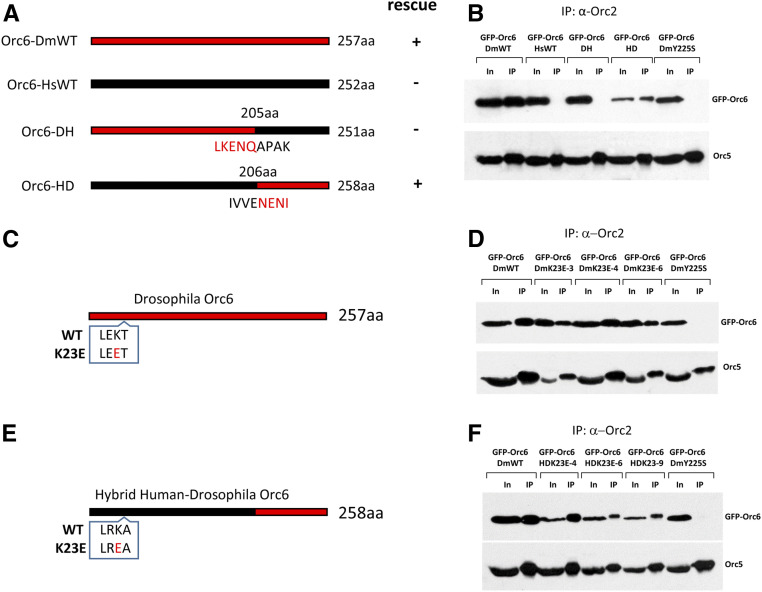Figure 2.
Design of hybrid Orc6 and Orc6 mutants. (A) Diagrams of transgenic constructs. Black represents human Orc6 and red represents Drosophila Orc6. Orc6-DmWT and Orc6-HsWT indicate wild-type Drosophila and human proteins, respectively. Orc6-DH is the hybrid protein containing first 205 amino acids of Drosophila and last 46 amino acids of human Orc6. Orc6-HD is the hybrid protein containing first 206 amino acids of human and last 52 amino acids of Drosophila Orc6. (B) Immunoprecipitation of the ORC complex with anti-Orc2 antibodies from ovaries expressing GFP-tagged Orc6 shown in A. (C) The position of the K23E substitution in Drosophila Orc6 (red). (D) Immunoprecipitation of ORC complex using Orc2 antibodies from Drosophila Orc6-K23E mutant fly ovaries. Immunoprecipitations from three independent transgenic fly stocks are shown: DmK23E-3, DmK23E-4, and DmK23E-6. (E) The position of the K23E in hybrid human-Drosophila Orc6. The substitution is colored in red. (F) Immunoprecipitation of ORC complex using Orc2 antibodies from hybrid human-Drosophila K23E mutant fly ovaries. Immunoprecipitations from three independent transgenic fly stocks are shown: HDK23E-4, HDK23E-6, and HDK23E-9. Orc6-DmY225S was used as a negative control.

